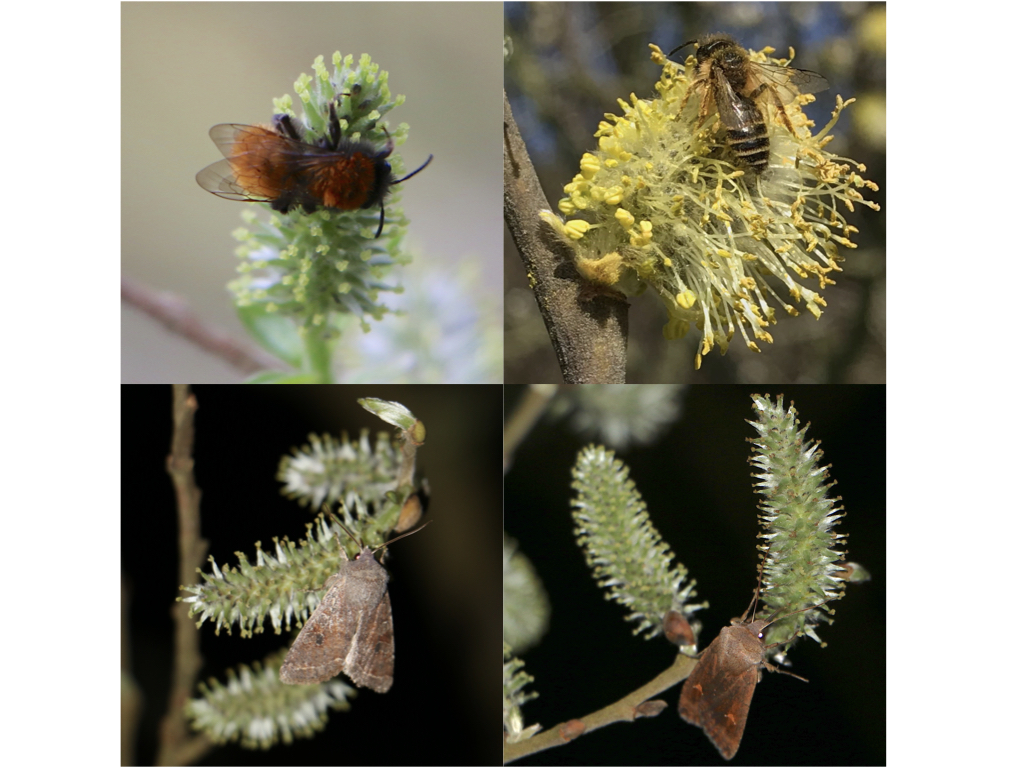Three options are better than two: compensatory nature of different pollination modes in Salix caprea L.
DOI:
https://doi.org/10.26786/1920-7603(2021)627Abstract
Mixed pollination systems have been reported for many angiosperms. Here, we report on a dioecious willow, Salix caprea L., which employs three pollination modes, namely pollination by wind, nocturnal moths, and diurnal bees. In four field populations of S. caprea in Germany, we addressed the following questions: (a) How are the pollination modes affected by local mate availability? (b) What is the contribution of each pollination mode to seed set? (c) How does flower opening time affect pollination? We compared seed set among seven pollination treatments (wind pollination, diurnal pollination, nocturnal pollination, natural pollination, apomictic reproduction, daytime/night-time artificial pollination). Pollen limitation was observed across populations. On the other hand, limitations in mate availability affected the pollination modes differently. Insect pollination outperformed wind pollination in situations where nearby males were few or all positioned in the same direction from the females. The contribution of nocturnal moths was lower than that of the other pollen vectors. However, moth pollination worked complementarily with bee pollination in compensating for the lack of wind pollination. Furthermore, we found that the onset of flower anthesis peaked at sunset, and that cold night temperatures had no negative effect on seed set or pollen viability. Thus, nocturnal anthesis and prior pollination by moths may minimize male fitness loss due to pollen collection and grooming by bees. We suggest that S. caprea maximizes its fitness by combining multiple pollination modes that work in different environmental conditions, while optimizing the anthesis so that more pollen would be delivered to stigmas.

Downloads
Published
How to Cite
Issue
Section
License
Copyright (c) 2021 Kaz Ohashi, Andreas Jürgens

This work is licensed under a Creative Commons Attribution 4.0 International License.
JPE is an open access journal which means that all content is freely available without charge to the user or his/her institution.
Authors who publish with this journal agree to the following terms:
1) Authors retain copyright and grant the journal right of first publication with the work simultaneously licensed under a Creative Commons Attribution License that allows others to share the work with an acknowledgement of the work's authorship and initial publication in this journal.
2) Authors are able to enter into separate, additional contractual arrangements for the non-exclusive distribution of the journal's published version of the work (e.g., post it to an institutional repository or publish it in a book), with an acknowledgement of its initial publication in this journal.
3) Authors are permitted and encouraged to post their work online (e.g., in institutional repositories or on their website) prior to and during the submission process, as it can lead to productive exchanges, as well as earlier and greater citation of published work (See The Effect of Open Access).
To assure a broader targeted audience, content will be included into databases (such as EBSCO) and directories (such as DOAJ).











